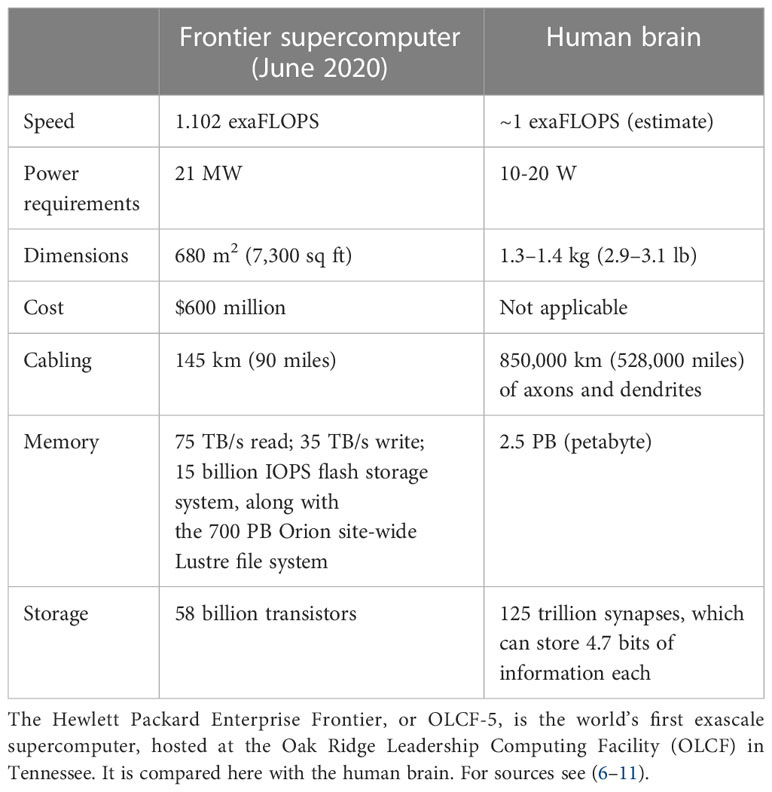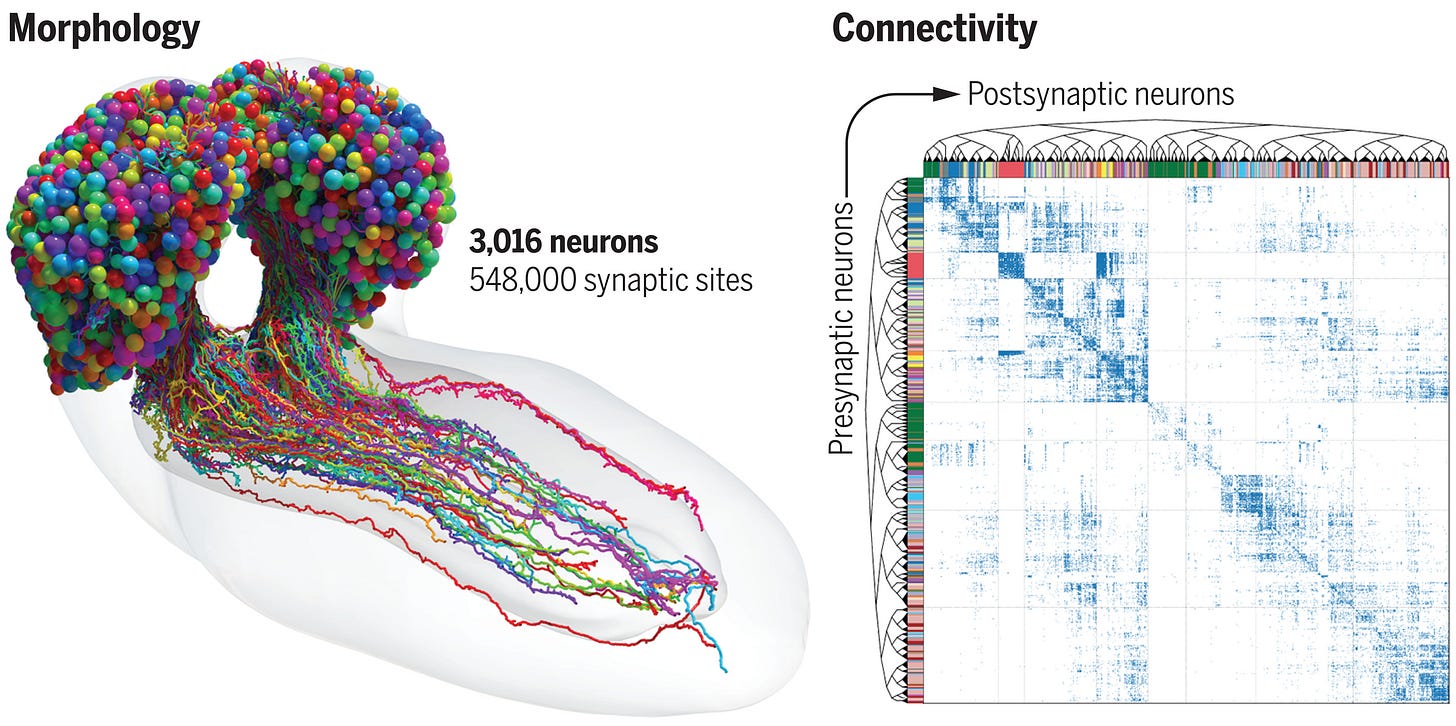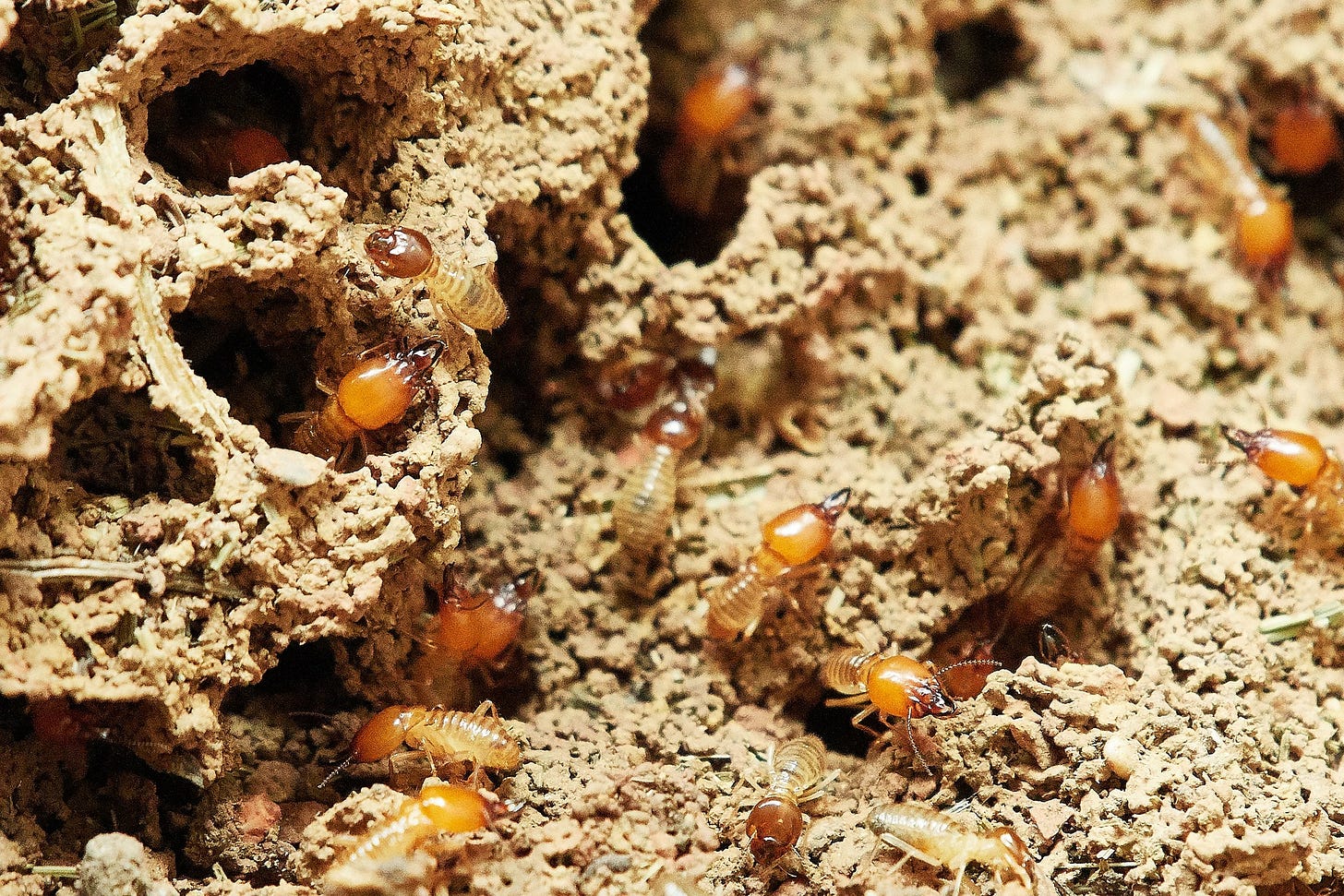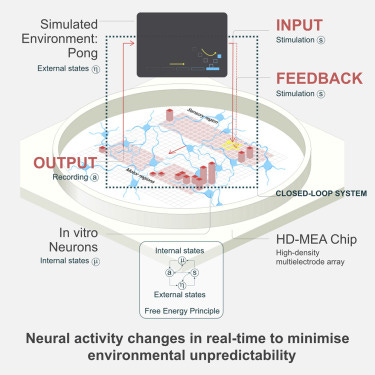Organoid Intelligence: Lab-Grown Human Brains as AI Bio-Hardware
The Ethical and Technical Implications of Using Lab-Grown Brains in AI
The concept of Organoid Intelligence being a potential pathway to AI development has taken many people by surprise, given its use of biological elements. The relevance of this topic has increased, especially in light of recent news on the subject. Developments in the field of artificial intelligence research have focused on the potential for synthetic biological intelligence (SBI), which harnesses the computational power of living neurons to create a new class of intelligent systems.
What is Organoid Intelligence?
Organoid intelligence refers to the concept of creating artificial versions of organs or tissues that exhibit the capacity for thought, learning, and problem-solving. The goal of this research is to create organoids that can perform complex functions like processing information. Organoids are three-dimensional structures that can be grown from stem cells and are designed to mimic the structure and function of real human organs. By growing organoids that mimic the structure of the brain, scientists hope to create artificial systems that can process information and exhibit rudimentary cognitive abilities.
The field of organoid intelligence is still in its early stages, and researchers face numerous challenges in developing organoids with advanced cognitive abilities. One of the main challenges is replicating the complex neural networks that exist in the human brain. The human brain contains around 86 billion neurons that communicate with each other through complex patterns of electrical activity and chemical signals, and recreating this complexity in a lab setting is a daunting task.
Creating a Mind
The idea of creating a mind is one of the most complex and controversial topics in science today. There is a debate among them about the path to achieving true AI. Some argue that understanding the workings of the human brain is a necessary condition, while others believe that intelligence can be attained solely through the development of advanced machines.
While scientists have made significant progress in understanding the brain and how it works, the question of how to create a mind from scratch remains a hard challenge. The main issue is how to create the complex network of connections between individual cells that is required for the emergence of intelligent behavior.
One approach to creating a mind is to build artificial neural networks that mimic the structure and function of the human brain. These networks are typically composed of interconnected nodes or neurons that can communicate with each other through electrical or chemical signals. By programming these networks with algorithms that can learn from input data, scientists hope to create machines that can recognize patterns, make predictions, and perform other complex tasks.
One of the main challenges in creating organoid intelligence is the need to create a "hive mind" from individual cells. In order to create an organoid with intelligence, it is necessary to establish a network of interconnected cells that can communicate with each other and process information collectively.
Key Components
Scientists are making progress in mapping the behavior of neural networks by creating synaptic wiring diagrams, of entire brains. One recent achievement is the discovery of the first-ever connectome of a Drosophila larva brain, consisting of 3016 neurons and 548,000 synapses. This insect whole-brain connectome is more complex and larger than previously reported connectomes and provides valuable insight into brain function and neural circuits through detailed analysis of neuron and connection types.
Creating a mind from scratch is an unprecedented challenge. To create a mind, we would need to recreate the complex network of connections between individual neurons that is present in the brain. This would require attaching each element of the system to another, which is an extremely difficult task. Without direct genetic supervision, it is unclear how we could achieve this level of complexity and coherence.
To achieve this, researchers use a combination of techniques such as genetic engineering, stem cell technology, and bioengineering. By manipulating the genes of stem cells, researchers can coax them to differentiate into specific types of cells that can form the basis of a neural network. These cells can then be organized into three-dimensional structures that mimic the structure of the brain, allowing them to form the basis of a hive mind.
Biological Example of Hive Mind
Termites represent a potentially useful example for creating a mind because they represent a relatively low-level system that can be studied in detail. Unlike the human brain, which is too complex and difficult to understand, termites are simpler organisms that can be studied more easily.
The study of termites is also useful because it allows researchers to explore the characteristics of low-level neural networks. By studying the behavior of individual termites and their interactions with other members of the colony, researchers can gain insights into the principles of self-organization, adaptation, and emergent behavior. These principles can be applied to the creation of more complex artificial systems.
By studying the behavior of individual termites and their neural activity, researchers can gain insights into the fundamental principles of cognition and the creation of a hive mind. They can use these insights to develop more sophisticated artificial systems that can perform complex tasks. For example, researchers can use organoid intelligence to create artificial tissues that mimic the behavior of termite colonies, allowing them to perform tasks such as collective decision-making and problem-solving.
There is a dilemma when it comes to classifying termites as a species. The argument goes that the swarm of termites, or the collective, should be considered as a single organism, with individual termites acting as its cells. This is a contentious issue among biologists, and there is no consensus on how to classify termites.
Interestingly, termites are extremely dependent on their colony and the collective behavior of the swarm. If a termite is taken out of the swarm, it will often die within a few minutes. This is because termites rely on the hive mind to regulate their body temperature, humidity, and other environmental factors. Outside of the swarm, they are exposed to these environmental factors, which can quickly lead to dehydration and death. This extreme sensitivity to changes is another example of how termites are highly adapted to their social structure and the collective intelligence of the swarm.
Through simple local interactions, termites are able to collectively build complex structures with remarkable efficiency and without any centralized control. This type of decentralized, self-organized behavior is also a key characteristic of organoid intelligence, which refers to the emergent properties of networks of artificially grown organoids. Like termites, organoids can self-organize to perform complex tasks without the need for explicit instruction or control. By studying both termites and organoids, researchers can gain insight into the fundamental principles of swarm intelligence and emergent behavior in biological and artificial systems.
Current State of Research
Scientists have come up with an exciting new system called DishBrain, which combines human or rodent neural networks with computer systems to create synthetic biological intelligence (SBI). They used a high-density multielectrode array to integrate these networks and recorded the activity using electrophysiological stimulation. Then, they created a simulated game world, like the classic arcade game "Pong," and watched what happened.
To their surprise, the neurons started to learn and respond to the game within just five minutes of playing. They were even able to figure out how to make goal-directed actions based on limited information about what was happening in the game. They also found that closed-loop structured feedback was essential to eliciting learning over time. The cultures were able to self-organize their activity. This system could provide further insights into the cellular correlates of intelligence, leading to new advances in the field of Organoid Intelligence.
The scientists aim to establish functional in vitro biological neuronal networks (BNN) from embryonic rodent and human-induced pluripotent stem cells to demonstrate that these neural cultures can exhibit biological intelligence. By doing so, they hope to explore how BNNs compute to inform machine-learning approaches and potentially give rise to computational platforms that surpass the performance of existing purely silicon hardware. The authors propose that generalized SBI could potentially arrive before artificial general intelligence (AGI) due to the inherent efficiency and evolutionary advantage of biological systems.
Another study suggests that the human brain is a remarkable organ that far surpasses computers in processing complex information, decision-making, and handling incomplete datasets. Although machines are faster at processing simple information like arithmetic, brains are more efficient in dealing with few and/or uncertain data, performing both sequential and parallel processing, and have a remarkable storage capacity estimated at 2,500 TB. In contrast, machines require much more power and observations to learn how to solve problems, which limits their usefulness for tasks requiring real-time learning and dynamic actions in a changing environment. OI aims to use biofeedback to train organoids with increasingly complex sensory inputs and output opportunities, interfacing the brain organoids with computers, sensors, and machine interfaces to facilitate supervised and unsupervised learning.
Brain organoids have similar cell density to in vivo cell density, and most show spontaneous electrophysiological activity and reactivity to electrical stimulation, confirming the presence of active synapses.
One of the key aims of the research discussed in this study is to scale up 3D brain organoids from their current size of around 50,000 cells to a much larger size of around 10 million cells. Achieving this scaling up is essential if the potential of these organoids for biocomputing is to be fully realized.
Brain emulation to Silicon-based Computers
Brain emulation, also known as whole brain emulation or mind uploading, is the hypothetical process of copying the brain's structure and function into a computer. The goal of brain emulation is to create an artificial intelligence that mimics human consciousness and can perform tasks similar to those of a human being.
Brain emulation involves creating a detailed digital model of a biological brain, including its structure and function, in order to replicate its cognitive processes in a computer simulation. The goal of brain emulation is to create a digital copy of a person's mind that can be uploaded to a computer or other device, potentially allowing for the transfer of human consciousness and the possibility of pseudo-immortality
According to Nick Bostrom, brain emulation could be achieved through a process of gradual replacement, where neurons in a biological brain are gradually replaced with digital equivalents until the entire brain is digital. Alternatively, a process of scanning could be used to create a digital map of the brain's structure and function, which could then be used to create a digital model of the brain. This model could then be run on a computer, producing a digital mind that is functionally equivalent to the biological brain.
One of the key challenges of brain emulation is the level of detail required to create an accurate digital model of a brain. Bostrom suggests that the level of detail required is likely to be very high, requiring the development of new scanning and modeling techniques. However, he argues that the computational power required for brain emulation is likely to be available in the near future, potentially making it a viable technology for the 21st century.
Key Advantages of Organoid Intelligence Compared to Silicon-Based Computers
Speed: Organoid intelligence could potentially operate much faster than silicon-based computing due to the use of biological materials and processes.
Efficiency: Biological computing could be more energy-efficient than silicon-based computing, meaning it requires less power and has a lower environmental impact.
Power: OI may be more powerful than silicon-based computing due to the use of 3D cultures of human brain cells, which could potentially lead to more advanced and sophisticated systems.
Learning: By using brain organoids, OI has the potential to create systems that can learn in a way that is similar to humans, which could lead to more advanced AI and machine learning.
Memory: OI may have the potential to enhance memory capacity in computing systems. Brain organoids have the ability to form complex neuronal networks and synaptic connections similar to those in the human brain, which could lead to the development of more efficient and powerful memory systems.
Creativity: Since OI is a different approach to AI, it could lead to surprising findings in the field. OI could lead to the development of new algorithms that are more effective and efficient than current methods. The use of brain organoids could inspire new ways of thinking about data processing and storage, potentially leading to more creative and innovative solutions to the challenges of AI development.
The Future of Organoid Intelligence
Despite these efforts, creating a mind remains an ambitious goal. The complexity of the brain and the vast number of connections between individual neurons make it challenging to replicate this complexity in a lab setting. In addition, the ethical implications of creating artificial minds raise numerous questions about the nature of consciousness, identity, and personhood.
The human brain is one of the most complex biological systems in the world. It consists of a huge network of interconnected neurons that communicate with each other through electrical and chemical signals. The brain is responsible for a wide range of functions, including perception, memory, emotion, and consciousness. Despite decades of research, scientists still have much to learn about how the brain works and how it gives rise to the complex phenomena of the mind.
These questions are unlikely to be resolved in the near future, ongoing research in this area is likely to lead to new breakthroughs in understanding the fundamental principles of intelligence and cognition. Even though OI is still in its infancy, there is little chance that its development will stop in the coming years. It appears to be just the beginning of a new paradigm in AI development, and we have yet to witness the full extent of its potential.
While debates regarding advanced AI systems focus on the field in which AI could surpass human performance, many argue that current systems lack emotions and unique creativity, which questions their competitiveness against humans. With matured organoid intelligence , these claims could be easily defeated since OI has the potential to be adaptive, creative, and even have real emotions.
Ethical Aspects
Organoid intelligence raises a host of ethical issues, ranging from concerns about the treatment of the lab-grown brain tissue to broader questions about the relationship between humans and artificial intelligence.
One major ethical issue is the treatment of the brain tissue itself. As organoids become more advanced, they may start to exhibit behavior that is increasingly similar to that of living organisms. This raises questions about how the tissue should be treated and what kind of ethical considerations should be taken into account. For example, should researchers be allowed to experiment on the tissue in ways that could cause it to experience pain or suffering? What rights, if any, should be afforded to the organoid?
Another concern is that the technology could be used to create sentient beings that are capable of experiencing emotions. If organoids were given rights, what kind of protections should they be afforded? What obligations would society have towards them?
Current LLMs are already raising questions such as: will it become consciousness? When can we say it has sentience? How can we align it with human values? With organoid intelligence, these questions easily transform into: does it feel something? Has it developed a real theory of mind? And the scariest question of all: Could it feel what I feel? If it has emotions, could it be sad or suffer like me? Or instead of "it" should we now start referring to "her" or "him"?










